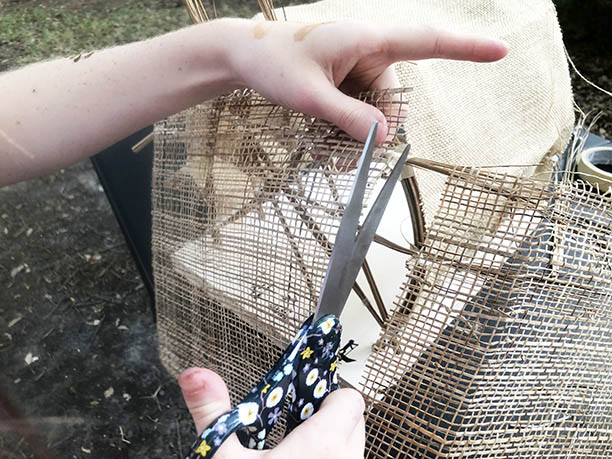What is a “wicked” problem?
/Wicked Workshop is a maker-based experience that introduces youth to architecture through reality-based projects that tackle "wicked" problems such as inadequate housing and environmental health. The workshops are led by today’s guest contributor, Phyllis Henderson (Fifi), a parent of two with a 20+ year background in architecture, design, teaching, and research focused on the human experience of the built environment and nature.
What is a “wicked” problem?
A wicked problem is one that is difficult or impossible to solve because of incomplete, contradictory, and changing requirements that are often difficult to recognize. Wickedness isn’t a degree of difficulty. Wicked issues are different because traditional processes can’t resolve them. A wicked problem has innumerable causes, is tough to describe, and doesn’t have one right answer. Environmental degradation, homelessness, and poverty are classic examples of wicked problems. They’re the opposite of hard but ordinary problems, which people can solve in a finite period by applying standard techniques. Not only do conventional processes fail to tackle wicked problems, but they also may exacerbate situations by generating undesirable consequences.
What are we doing?
We offer a K–12 maker program that introduces decision-making strategies for complex problem solving and critical thinking opportunities that are recognized as vital 21st-century skills necessary to succeed in work, life, and citizenship. We do this through a straightforward hands-on curriculum that incrementally introduces materials and methods of construction, environmental and climate considerations, and cultures from around the globe. Students achieve global education, civic literacy, and advocacy while practicing adaptability, self-direction, collaboration, and leadership.
How do we do it?
We approach a wicked problem such as inadequate housing by first introducing a house from a particular culture. Students learn about structure, materials, construction, society, culture, environment, geography, and geometry through drawing and making. For example, for the Tatami House, we will visit Japanese culture and wood construction; for the Toltec Clay House we look at clay/mud and straw structures and Central African cultures. Students then apply their knowledge to design and construct their own iteration (or several iterations) that will ultimately be placed within a community setting and address the wicked problem. This basic structure gives us ample opportunity to explore issues of citizenship and community while maintaining personalization and individual growth.
Why do we do it?
The positive implications and opportunities of the Wicked Workshop are far reaching for education and society. Students learn about partnerships and the value of collaboration as we directly engage community experts who are themselves working on wicked problems. Students will present their work in a casual gallery setting for friendly constructive critique, suggestions for next steps, and how their ideas translate to real-world civic applications or possible service opportunities.
Will this be too complex for my Kindergartener or too simple for my 12th grader?
Not at all! This program is designed to be open-ended to support learners at varying levels of maturity. We bring big ideas to a younger audience in a makerspace environment that is friendly and stress-free. We encourage independent thinking, self-directed learning, exploration, iteration, and creativity. We ask thinkers to make and makers to think through safe exploration where there are no wrong answers. We layer technical information in a makerspace way—through building, drawing, and talking about our ideas. For example, when we introduce inadequate housing to Kindergarteners (a wicked problem), we might talk about a fallen bird house or a fairy garden without proper water supply. For older students, we might look at the Tiny House Community (Community First! Village) in Austin and explore more complex urban density concepts.
Why such “big problems”? My child likes crafts and making things but doesn’t want more “school” after school.
Neither do we! We are motivated toward making and tinkering. We will be making models, drawings, books, board games, cities, animal habitats, and more as we explore all aspects of the built environment. When we find surprises in our research, we will explore them through making. “Big problems” serve as the real-world framework to guide decision-making and introduce the concept of civic responsibility and societal engagement—a role often played by the architect. We’re not planning to solve the world’s problems; however, big problems bring big ideas, and kids are capable of incredible things when given adequate time and space. The goal of the studio workshop is to encourage each student to develop a process for making decisions (big and small) and to cultivate a level of comfort for giving and accepting criticism in an environment of self-discovery and thoughtful guidance.
Where did the idea for Wicked Workshop come from, and who’s teaching it?
My name is Phyllis Henderson, but I am called by my nickname “Fifi.” I’m a mom to two active girls, an architect, and an educator. As a mom, I spend a lot of time looking for opportunities for my girls to build self-esteem, independence, and critical thinking skills. As an educator with a PhD in architectural history and theory, I recognized that Design Thinking was being used outside of professional design practice to help resolve issues in multiple industries, including business and societal sectors. Design Thinking is a non-linear, strategy-based process for problem solving that tackles issues through empathy and iterative hands-on making. It was developed by Stanford University’s “d” school for people in business, higher education, the public sector, and K–12 education as a process to create real change. As an architect, I practiced this methodology as a direct extension of my traditional university architecture school curriculum and decided to scale that learning experience for a younger audience.
Working with kids on big problems has been one of the most rewarding aspects of my career, and I am energized by the ideas, dynamism, and joy that kids bring to wicked problems. I’m looking forward to another year of amazing kids who tackle wicked problems!
Phyllis Henderson












